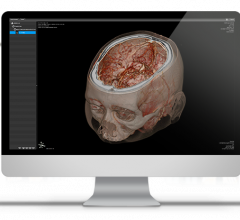If you enjoy this content, please share it with a colleague
Hitachi Medical Systems America
RELATED CONTENT
The U.S. ultrasound market reached an all-time high of $1.44 billion in 2013 — a growth of almost 3 percent over 2012, according to Klein Biomedical Consultants’ “The Medical Diagnostic Ultrasound Market in the USA: Challenges & Opportunities in the New Millennium” 2013 report. Areas that contributed to market growth included musculoskeletal ultrasound and point-of-care ultrasound, which saw double-digit growth in 2013. “In spite of the uncertainties caused by the Affordable Care Act, continued declines in reimbursement and slow economic growth, we saw an uptick in ultrasound purchases,” said Harvey Klein, Ph.D., market analyst and author of the report.
The U.S. magnetic resonance imaging (MRI) market has been stable for the last few years. With an estimated value of $1.25 billion, the market has been flat with very low, if any, growth. It is predominantly a replacement market, with the majority of hospitals and imaging facilities upgrading older systems to newer ones. From a field strength standpoint, 1.5T and 3.0T systems dominate the market — approximately 65 and 35 percent, respectively.
Incidents of cancer are on the rise globally. According to a press release from the World Health Organization’s (WHO) International Agency for Research on Cancer (IARC), “In 2012, the worldwide burden of cancer rose to an estimated 14 million new cases per year, a figure expected to rise to 22 million annually in the next decade.” As the numbers increase around the world, research continues to unveil unconventional options for cancer treatment. Over the past five years, proton therapy has emerged as one popular choice. Hailed by some as the Rolls Royce of radiation oncology, the technology’s precision and accuracy, along with its ability to prevent damage to critical structures and healthy tissues, has made it a technology that many vendors and healthcare facilities are actively investing in.
More than 55 companies displayed their latest products and services at the American Society of Echocardiography (ASE) 25th Annual Scientific Sessions June 20-24 in Portland, Ore. The meeting is the largest for cardiovascular ultrasound. Highlights from the show floor included:
Radiation dose management has come to the forefront of healthcare concerns with both patients and providers advocating for measures that will decrease and manage exposure. Research has shown that medical imaging has doubled the public’s exposure to ionizing radiation since the 1980s, and while this statistic includes fluoroscopy, angiography, mammography and standard X-ray, computed tomography (CT) has contributed the majority of the dose increase.
Hokkaido University and Hitachi Ltd. completed construction of facilities incorporating the Probeat-RT Proton Beam Therapy System within the Hokkaido University Hospital. Hokkaido University and Hitachi had been jointly developing the Probeat–RT. The project was awarded a grant in 2010 under the Funding Program for World-Leading Innovative R&D on Science and Technology (the “FIRST Program”), a national project sponsored by the Japanese government. The University plans to begin treatments using the newly constructed facilities March 19, 2014.
The four MRI vendors fully ranked by KLAS are all within five points of each other as the MRI market becomes increasingly competitive. The newly released KLAS report MRI 2013: Sorting through the Noise examines what differentiates these vendors from one another, including their strengths and weaknesses.
The average age of installed MRI scanners in the United States has increased from 8.7 years in 2010 to 11.4 years in 2013, according to a new market research report by IMV Medical Information Division.
Calgary Scientific Inc. announced it has become a member of the Health and Life Sciences Technology Alliance Partner (TAP) program of Hitachi Data Systems and will partner with Hitachi Data Systems to deliver the next generation of vendor neutral archive (VNA) solutions built on the Hitachi Clinical Repository platform.
With concerns about radiation dose and reducing unnecessary imaging scans, advances in computed tomography (CT) systems have brought about technologies such as iterative reconstruction software, intraoperative capabilities and dose-tracking software. In addition, recent studies on the use of CT on select patient populations and the modality’s benefits in detecting certain cancers are showing that the risks of CT imaging can go both ways. While CT exams can add to a patient’s lifetime exposure to ionizing radiation, they can also be more beneficial in cases where magnetic resonance imaging (MRI) or ultrasound might not be able to detect early-stage cancers. Some of these trends in utilization indicate that appropriate low-dose CT imaging will be key across patient populations.

 November 06, 2014
November 06, 2014 





